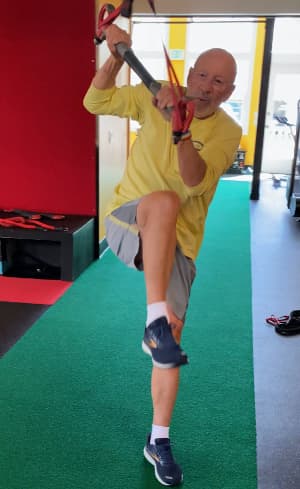Why do I get stiffer? Why do I have back pain? What should I do to reverse the effects of aging??? Unlike a turtle’s shell, the human “core” is designed to rotate and produce power. If you teach the core muscles and fascia to be rigid and unmoving, that’s what your body learn and ultimately leads to immobility and back pain.
Whenever we’re not moving, our bodies are busy making sticky fuzzy connective tissue aka fascia. Kinda like cotton candy. This is why after you sit, stand, or sleep for a while your body gets stiff.
The space between your muscles that’s supposed to be like a slip and slide becomes stuck and sticky.

If you’re not heating up the fuzz and melting it away you end up stuck in a spiders web of tightness. And then you bend down to tie your shoes, and instead get 6 weeks of pain. And while you’re skipping workouts and not moving because of the pain, your body downloads even more sticky fascia to protect the injured area… Studies show that the thoracolumbar fascia of chronic back pain sufferers is 25% thicker than normal.

Unlike a turtle’s shell, the human “core” is uniquely engineered to dynamically produce torque—a.k.a. rotational power—so you can move effectively in your 3-Dimensional world and activities. This is why the vast majority of core muscles and fascia are arranged obliquely (at angles), not axially (parallel to the spine).

Unless you secretly want to become a turtle, the last thing you want is a “stiff and stable” core.
Practicing planks and many conventional exercises teach the core muscles and fascia to be rigid and unmoving, which ultimately leads to immobility and pain. Who wants to live an active lifestyle in a straight-jacket of stiff fascia that tears muscle when you move?


Inspired by his deep-seated beliefs, he practiced 24/7 saluting his right arm overhead. After a few focussed months, his fascia/connective tissue took over the task of “stabilizing”, and his arm has been stuck in a salute —immobilized & useless like a dead tree branch—for over 40 years.
Check out this 30-second video, to see how we practice using our Core Engine’s to dynamically produce, transfer, and control 3-D Movementegrity™ exercises.



